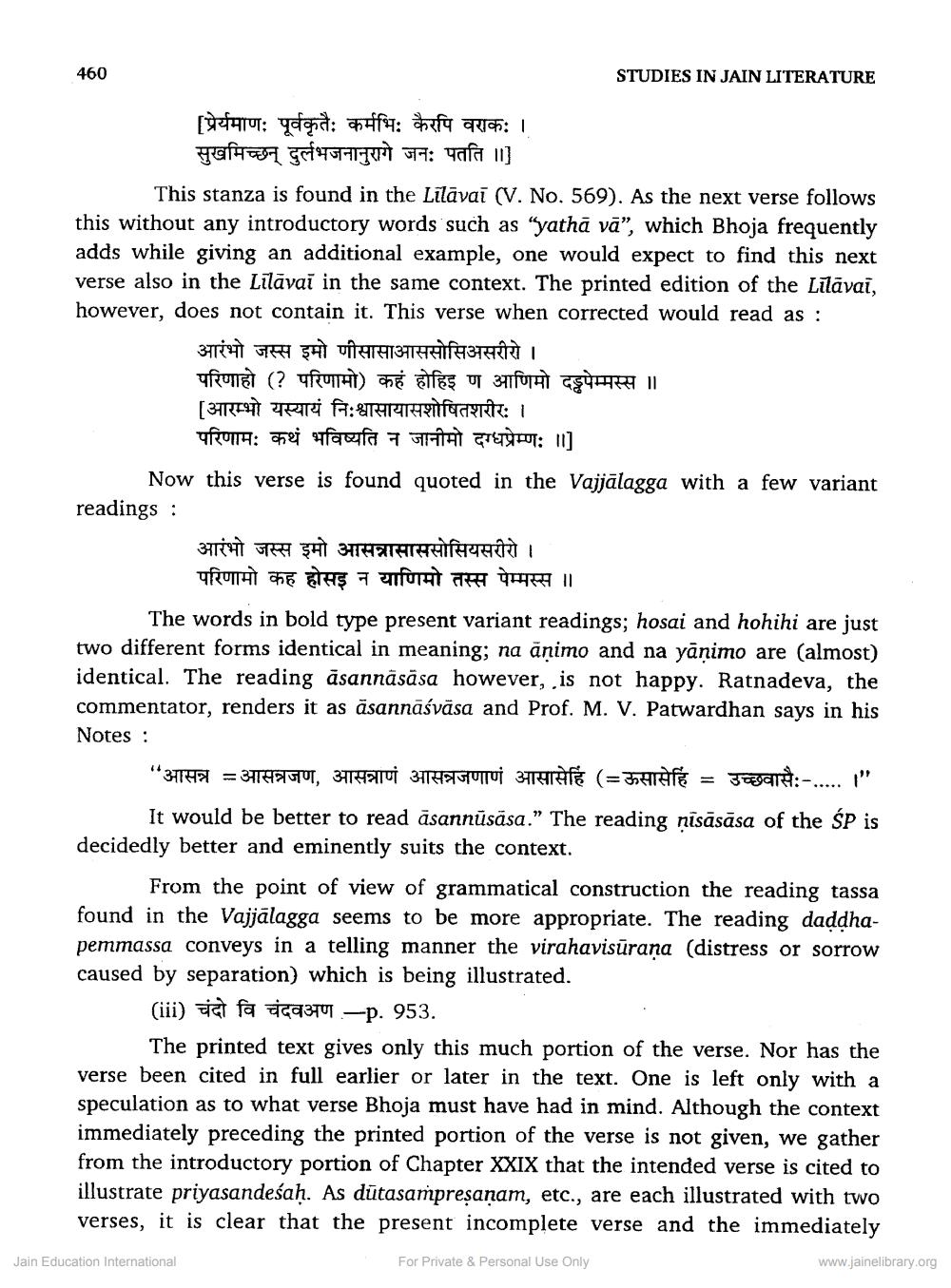________________ 460 STUDIES IN JAIN LITERATURE [प्रेर्यमाणः पूर्वकृतैः कर्मभिः कैरपि वराकः / सुखमिच्छन् दुर्लभजनानुरागे जनः पतति // ] This stanza is found in the Lilavai (V. No. 569). As the next verse follows this without any introductory words such as "yatha va", which Bhoja frequently adds while giving an additional example, one would expect to find this next verse also in the Lilavas in the same context. The printed edition of the Lilavai, however, does not contain it. This verse when corrected would read as : आरंभो जस्स इमो णीसासाआससोसिअसरीरो / परिणाहो (? परिणामो) कहं होहिइ ण आणिमो दडपेम्मस्स // [आरम्भो यस्यायं निःश्वासायासशोषितशरीरः / परिणामः कथं भविष्यति न जानीमो दग्धप्रेम्णः // ] Now this verse is found quoted in the Vajjalagga with a few variant readings : आरंभो जस्स इमो आसनासाससोसियसरीरो / परिणामो कह होसइ न याणिमो तस्स पेम्मस्स // The words in bold type present variant readings; hosai and hohihi are just two different forms identical in meaning; na animo and na yanimo are (almost) identical. The reading asannasasa however, is not happy. Ratnadeva, the commentator, renders it as asannasvasa and Prof. M. V. Patwardhan says in his Notes : "31111 = 3THAGUT, BURHAN 3THE FUTUT 3THAFE (= SHARE = 5aard:-..... " It would be better to read asannusasa." The reading nisasasa of the SP is decidedly better and eminently suits the context. From the point of view of grammatical construction the reading tassa found in the Vajjalagga seems to be more appropriate. The reading daddhapemmassa conveys in a telling manner the virahavisurana (distress or sorrow caused by separation) which is being illustrated. (iii) ja fa ga3tup. 953. The printed text gives only this much portion of the verse. Nor has the verse been cited in full earlier or later in the text. One is left only with a speculation as to what verse Bhoja must have had in mind. Although the context immediately preceding the printed portion of the verse is not given, we gather from the introductory portion of Chapter XXIX that the intended verse is cited to illustrate priyasandesah. As dutasampresanam, etc., are each illustrated with two verses, it is clear that the present incomplete verse and the immediately Jain Education International For Private & Personal Use Only www.jainelibrary.org




